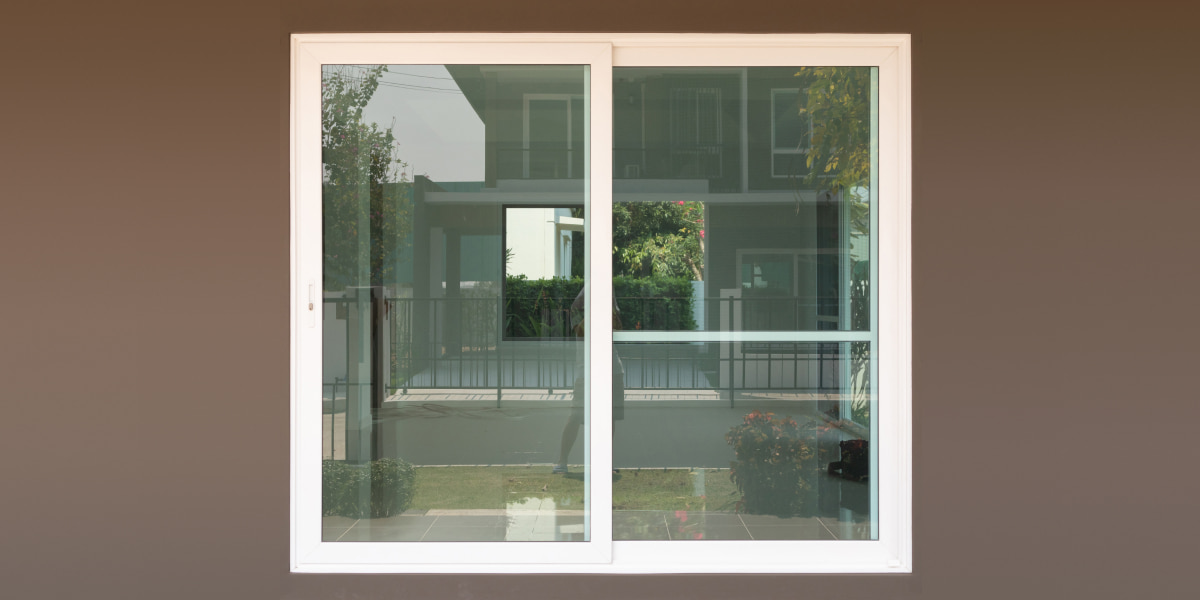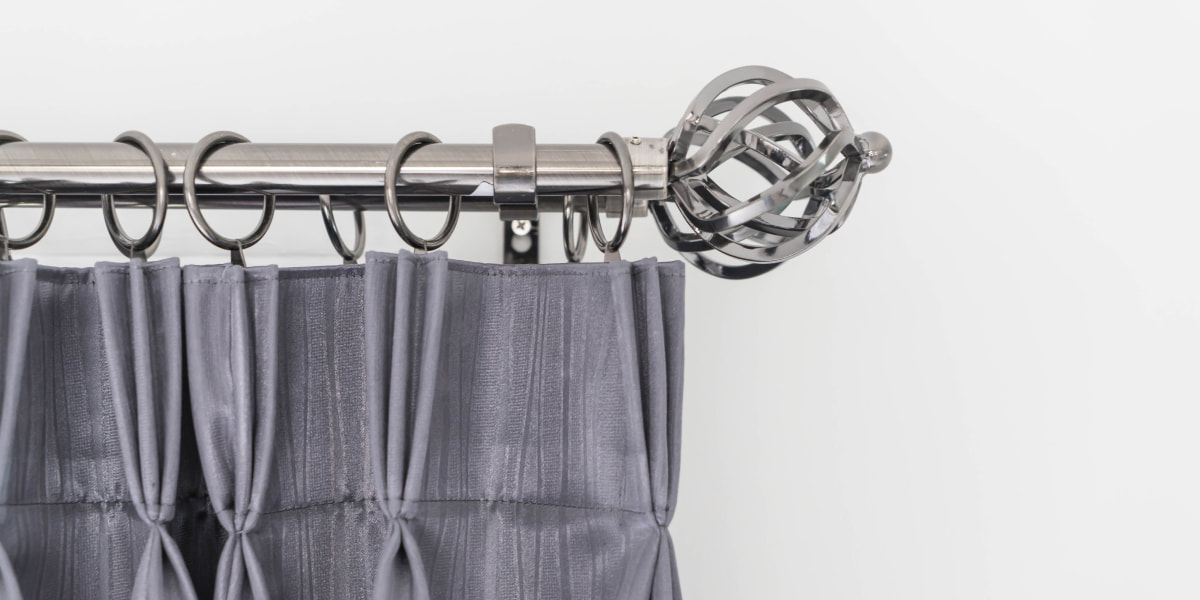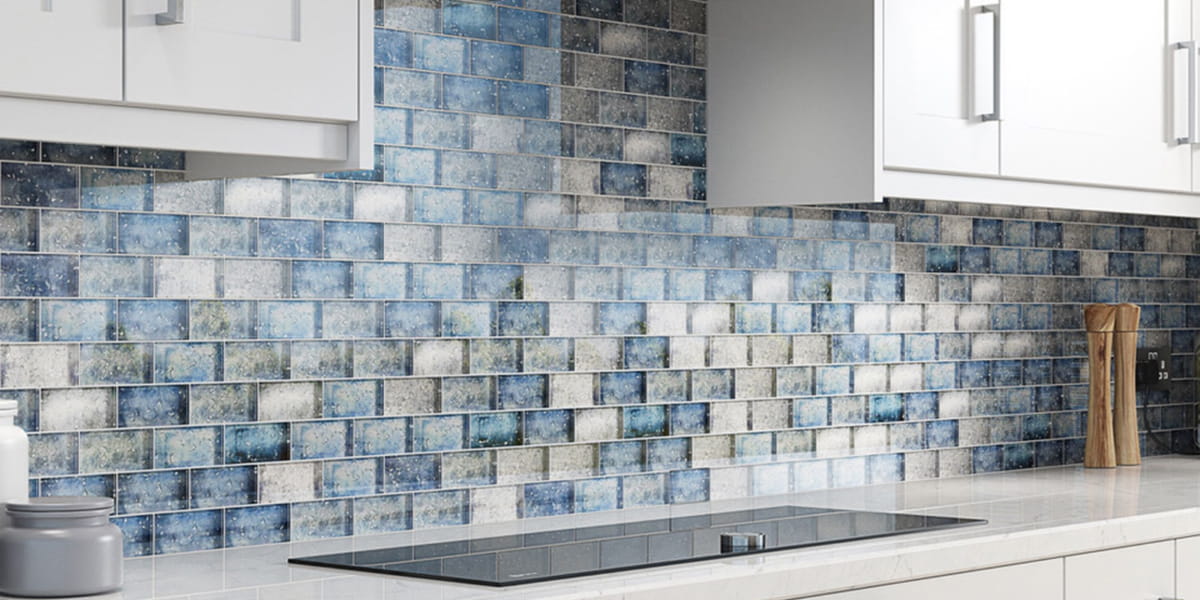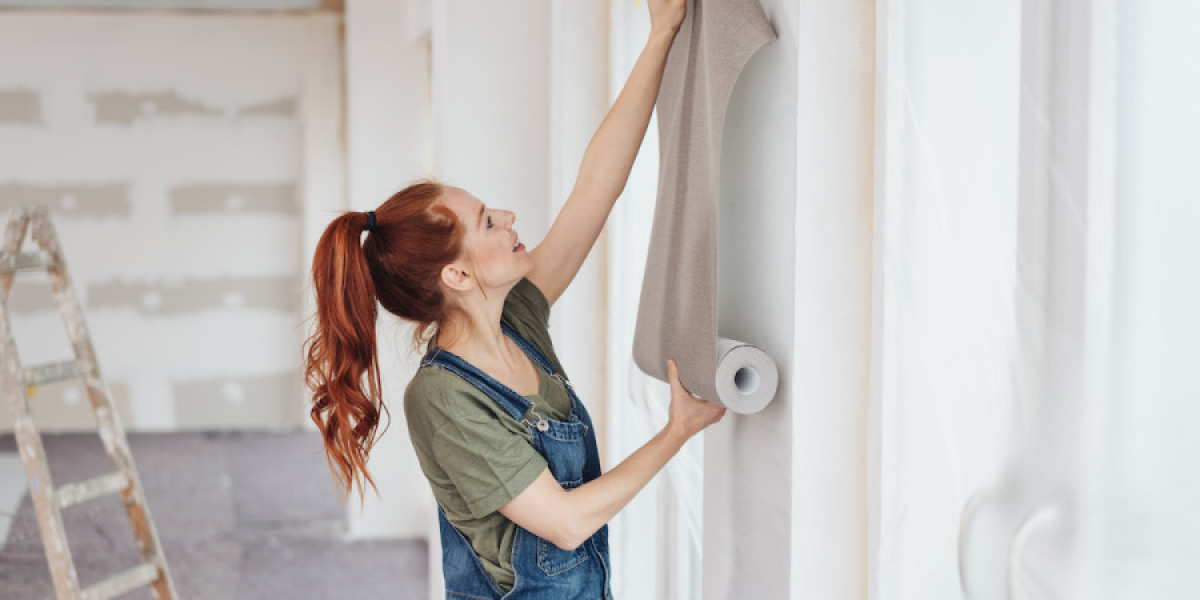Published on September 9th, 2022
Last updated on February 6th, 2023
How To Paint Over Wood Paneling? Painting Wood Panels In 4 Steps
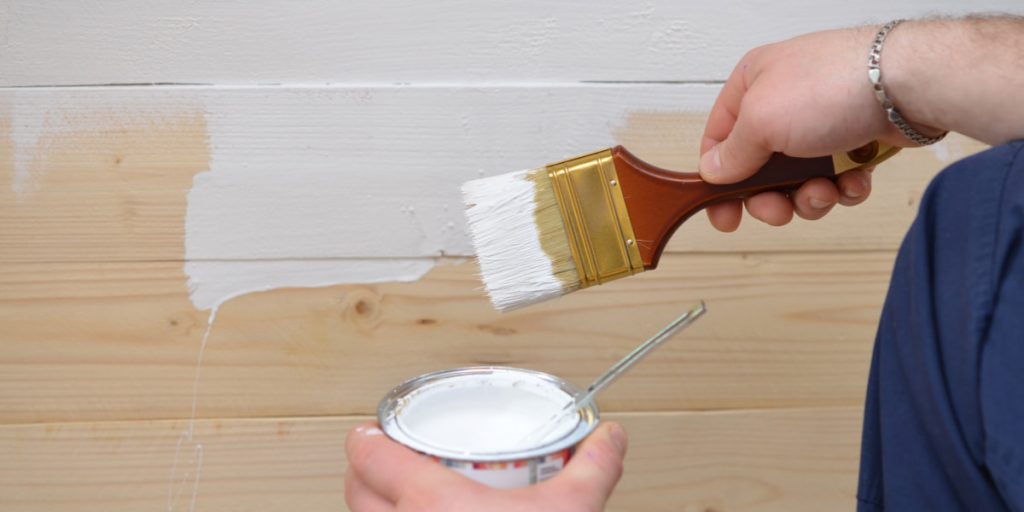
You can easily paint the paneling yourself by using chalkboard paint to dye the wall. Today we will consider how to refurbish paneling to make it beautiful and fashionable again. Painting a wood panel wall is a quick fix in a day. Painting the panels will add warmth and character to your interior. When planning a renovation of a room with old paneling hanging on the wall, you don’t have to call in professionals and tear it down. Wood paneling has been a popular finish material for years for four reasons:
- Self-leveling construction – the panels eliminate minor base irregularities;
- A rigid, even surface – you can hang lightweight shelves on the panels or fix furniture with ordinary screws and screwdrivers;
- Easy to install in a few ways – with clamps, surface nails, or screws;
- 90% are ready for painting or lacquering.
In this article, I will show you the best way and solution for painting wood panels inside your home or on your balcony.
How To Prepare The Wood Panels For Painting
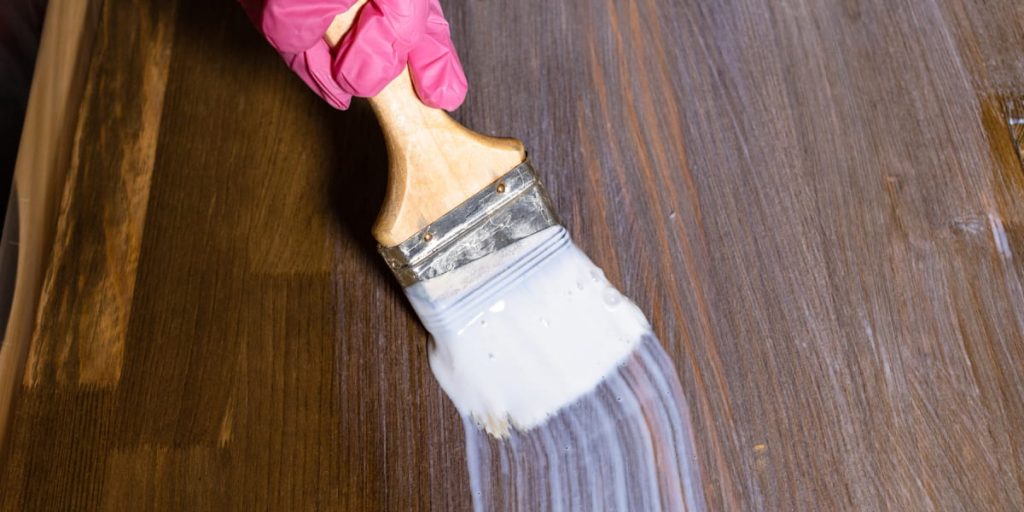
As a rule, the wood is prepared for painting with a thorough treatment of dirt and impregnation. The panels are made from selected timber and are strips with grooves. It is what makes painting time-consuming. If the paneling on a balcony has been done for a long time, a lot of dust and greasy soot will accumulate on the wood panels’ surface. Firstly, you must prepare the ground for changes, i.e., peel off the old paint layers. The sequence is as follows:
- Sand the paneling, including the grooves, with fine sandpaper so as not to scratch the boards;
- Vacuum up the excess dust with a hoover;
- Wipe down with a wet cloth.
If you want to leave natural wood on the wall, you need to do it carefully. If you are going to paint – you just need to roughen it up so that the new paint will hold. It is the most time-consuming part of wood panel repair. In rare cases, the owner leaves the finished material unprotected. This means a layer of dirt and the old coating will have to be removed. If fragments of old paint are left in the recesses, they will be visible in sunlight. You can also use a particular product to remove varnish and old paint – a paint remover.
How To Renovate A Wood Panel: Painting The Planks On The Wall
If you like natural wood or want to give the interior a rustic feel, it is advisable to protect the cleaned planking with matte varnish. It will protect it from darkening.
Panels are usually treated using the following products:
- damp-proofing compounds;
- preservatives: clear and translucent, film-forming and impregnating;
- paints: oil-based and dispersion paints;
- varnishes of all kinds.
Each has its function, advantages, and disadvantages. Therefore, it is essential to learn about the characteristics of the coatings and their physical characteristics and to assess their suitability before painting the panels.
The preservative treatment is compulsory for battens used for paneling. This treatment is generally carried out before the finish, and the panels are treated on both sides. Let us find out how to paint paneling in the house.
1. Varnishing Wood Panel

If you choose to varnish your wall, it is significant to be aware that the resulting coating may vary in terms of its chemical and physical properties. The determining factor in this matter is the base of the composition.
- Aqueous. The main advantage of such compositions is their safety. The environmentally friendly materials used in production ensure that the coating is hypoallergenic, virtually odor-free, and have other benefits;
- Alkyd. In contrast to the previous option, this varnish can be used in almost any room and climate because it forms a water-repellent film after painting a wood panel wall;
- Acrylic. They provide good protection to the cladding against direct exposure to ultraviolet light and moisture. They do not contain harmful volatile components, i.e., they are safe. Acrylic lacquers are inexpensive and available in a wide range of colors;
- Polyurethane. It is intended exclusively for the external painting of battens. It concentrates vital advantages of lacquers on other bases: moisture and frost resistance, efficient protection against UV radiation, fast drying, and long service life.
2. Painting Wood Panel
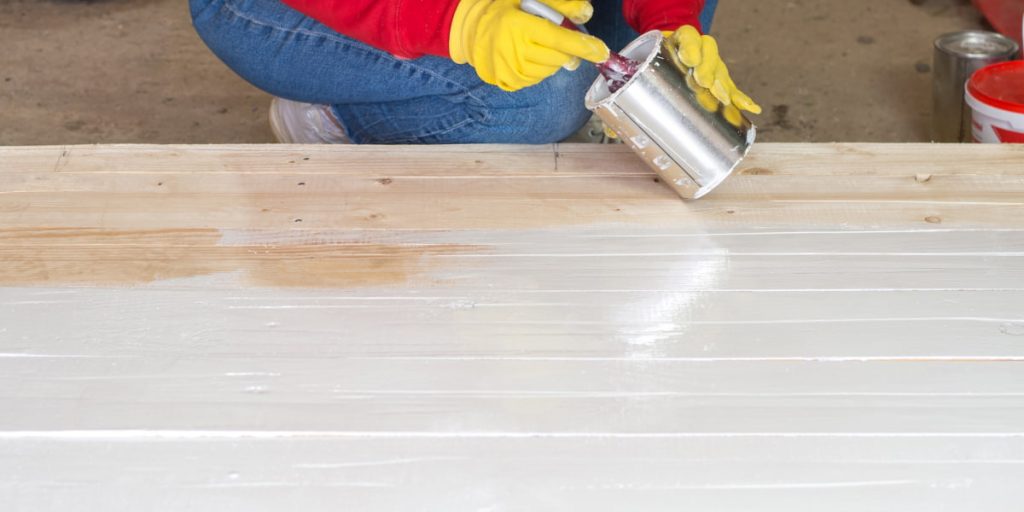
Paint for linings is used in exceptional cases. Imperfections of the linings or the texture of the linings can be concealed underneath if the design requires it.
- Oil paints. Any brand of oil-based paint is suitable for coating paneling. It absorbs well into the structure of the linings and provides good protection against moisture and UV radiation;
- Water-based paints. An aqua wood stain retains its color intensity and gloss much longer and dries faster;
- Thick-bodied alkyds. It can neither warp nor crack. Therefore, this method is particularly recommended in regions with colder climates;
- Facade paints. These compositions have good elasticity and a high level of moisture resistance. They are durable, easy to apply, and capable of masking imperfections on the wood surface.
3. Wood Panel Impregnation
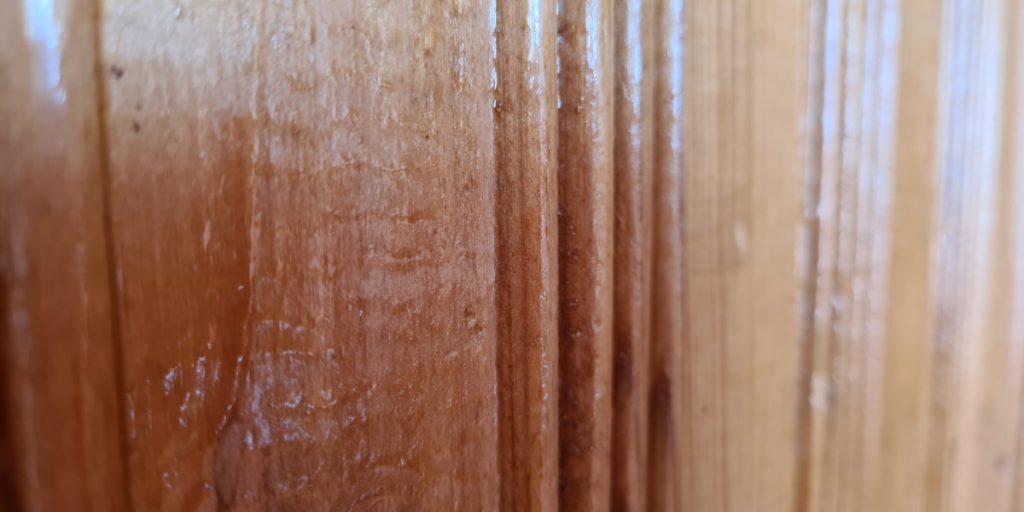
The easiest way to paint wood panels is stain impregnation. While being budget-friendly, it is pretty compelling. After good impregnation, the wood will successfully resist the processes of rot, mold, and fungus. However, the color gamut of stain is not exceptionally diverse. Use a particular stain containing additives on the outside that prevent paint’s fading.
Painting A Wood Panel In 4 Steps
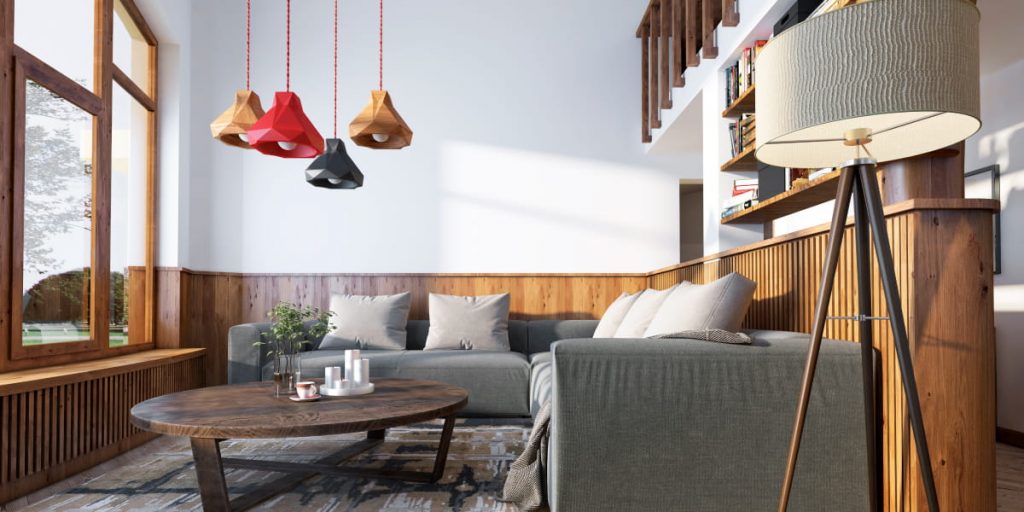
To paint paneling effectively in just one day, you’ll need:
- paint material in the color of your choice (preferably a light, pastel color);
- foil and masking tape;
- a paintbrush (narrow) and paint roller;
- paint pan;
- protective gloves.
STEP 1: Use painter’s tape and plastic wrap to protect the floor, door frames, window sills, socket outlets, contacts, and the ceiling from uncontrolled chalk paint contamination;
STEP 2: Then thoroughly wash and degrease the painted wall surface with warm water and dishwashing detergent. Wipe it dry. You should wipe dry areas with dried-on grease (in the kitchen, for example, sand lightly or degrease with a more robust cleaner for sinks and surfaces with greasy stains);
STEP 3: Mix in a jar, then pour a small amount of chalk paint into the paint pan (it’s very effective). Using a small brush, paint a wood panel wall from the joints of the boards or wooden panels. Use a brush to paint the trim at the joints between the paneling, ceiling, and floor;
STEP 4: Using a paint roller, paint the remainder of the panelled wall like an ordinary wall. Wait until the first coat of paint dries (about 1-2 hours, depending on the manufacturer), and then apply a second coat over the wood panel. Wait until it dries and enjoy your new wood paneling interior.
How To Decorate Painted Paneling?
After all the manipulation of painting the wood panels, you can add some decor to your wall. You can do it any way you want. Also, you can whitewash it with a stain that matches the character of the flat, for example. Then, depending on your preferences:
- A thick natural or woven colored string is pressed into every vertical aperture to remain visible, like in highland cottages. Combine this with a rag rug, felt armchair, table, or stump chair, and simple light wood furniture to create a fashionable interior;
- Add jokey elements to such a natural wall, e.g., hangers made of untrimmed twigs, horns made of plywood, “leather” made of wool, shelves made of boxes, etc.;
- If you have one panelled wall and a parquet floor in your room, elements in the 60s style will work well together. e.g., a table or armchair on thin legs, colorful ceramic;
- Be creative in your choice of slots: you can create variations of small white stiff pieces of paper pressed together, geometric decorations made of thick thread or string between pins, or an extensive photo gallery;
- If you prefer a more relaxed style, opt for a simple plain floor, add tall modern skirting boards, and well-designed furniture to create an elegant, timeless interior. Painting wood panels can be done by anyone in this way and gives impressive results at a meager cost.
Summary
Painting wood panels is trendy. It is used for finishing the facades of buildings for various purposes, as well as interior rooms. Balconies are fairly often finished with this material. However, it is essential to note that this natural material requires special care. In this article, you have learned more about painting techniques and materials. Therefore, you must always be especially careful when handling chemicals. When working: wear gloves, protect your eyes with goggles, and ventilate the room.
FAQ
What Temperature And Humidity Should Be In The Room When Painting The Wood Panels?
It is advisable to work on warm days with average humidity. This way, the paint, varnish, or impregnation will dry evenly. It will prevent the material from flaking or cracking in the future.
Which Is Better To Paint Paneling: Paint Or Varnish?
It all depends on the result you would like to see. If you want to retain the texture and color of the wood, we recommend using clear or slightly tinted varnishes. Paint not only completely masks the surface of the wood but can also be used to change the color of the wall to whatever you like.
What To Use When Painting Over The Wood Panels In The Sauna?
Generally, compounds that can withstand extreme temperatures are used. Synthetic options are unsuitable for these tasks, as they will release toxic substances in the “sauna” conditions. Paintwork products with natural oils as the main ingredient are more suitable. They will help to maintain the natural balance of the room.
What Are Precautions For Painting Over Wood Panels?
You must wear protective gear, such as a respirator or, in the absence of a respirator, a thick gauze bandage.


